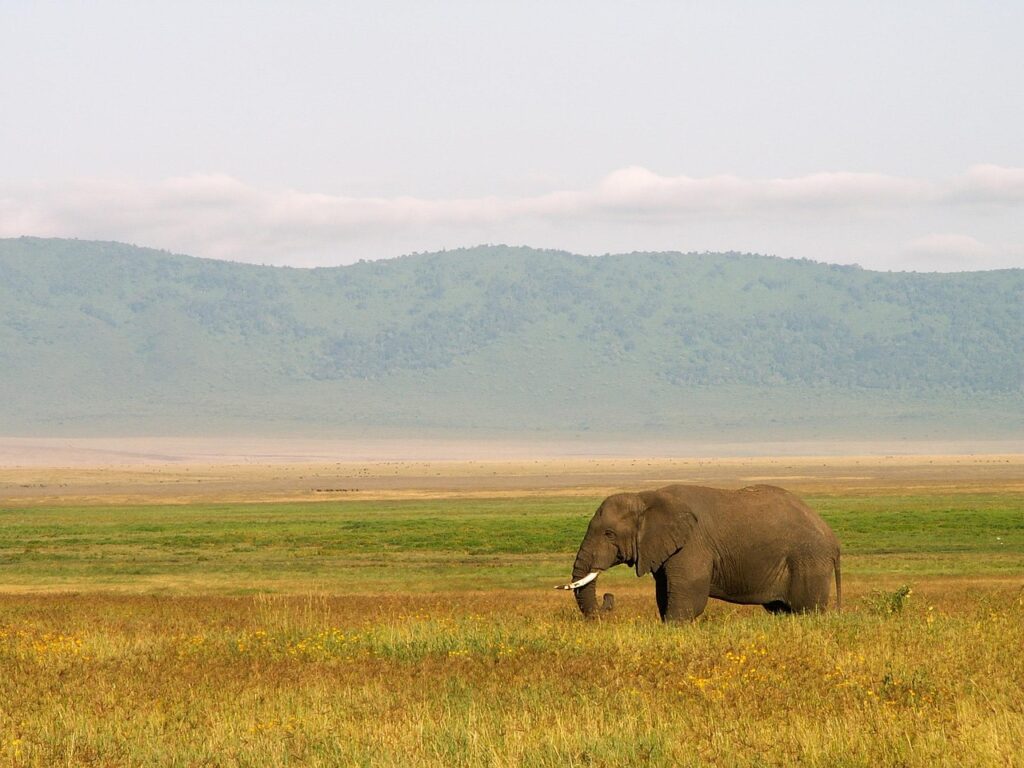
- Tanzania - East Africa
Can I Walk Near Wildlife in Tanzania? – Complete Guide
For many travelers, one of the most exciting questions is: “Can I walk near wildlife in Tanzania?” Tanzania is home to some of the most famous national parks and conservation areas in the world, including the Serengeti, Ngorongoro Crater, Tarangire, and Lake Manyara. While most wildlife experiences are from the safety of a safari vehicle, walking safaris offer a unique way to connect with nature, observe smaller creatures, and experience the African wilderness from a closer perspective.
This guide explains everything you need to know about walking near wildlife in Tanzania, including safety, best locations, guided walking safaris, seasonal considerations, and tips to make the experience both thrilling and secure.
Why Walking Safaris Are Unique
When asking “Can I walk near wildlife in Tanzania?”, it’s important to understand the differences between walking safaris and traditional game drives:
Close-to-Nature Experience: Walking allows you to notice tracks, insects, birds, and plant life that might be missed on a vehicle safari.
Guided by Experts: Walking safaris are led by highly trained guides and sometimes armed rangers to ensure safety.
Intimate Wildlife Encounters: While you won’t get as close to lions or elephants as in a vehicle, you can observe smaller mammals, birds, and herbivores at eye level.
Educational Experience: Guides provide insights into animal behavior, ecology, and conservation.
Safety: Can I Walk Near Wildlife in Tanzania?
Many travelers worry: “Can I walk near wildlife in Tanzania?” The answer is yes, but with proper precautions:
Guided Only: Walking safaris are always accompanied by a guide and, in some parks, an armed ranger.
Targeted Wildlife: Walks focus on areas where encounters are safe — primarily with non-predatory species or herbivores.
Distance from Dangerous Animals: Predators such as lions, leopards, and elephants are observed from a safe distance.
Group Safety: Walks are usually small groups, which ensures the guide can manage interactions and respond to wildlife.
With these measures, walking near wildlife in Tanzania is safe, educational, and unforgettable.
Best Locations for Walking Safaris
If your question is “Can I walk near wildlife in Tanzania?”, some parks and regions are particularly suited for walking safaris:
1. Serengeti National Park
Famous for open plains and the Great Migration.
Walking safaris focus on herbivores, birdlife, and predator tracking with experienced guides.
2. Tarangire National Park
Known for elephants and baobab trees.
Walking safaris provide opportunities to observe elephant tracks and smaller wildlife safely.
3. Ngorongoro Conservation Area
Walking safaris near crater rims and designated areas allow for safe close encounters with plains wildlife.
Guides explain conservation and Maasai community practices.
4. Manyara and Northern Circuit Conservancies
Small private concessions often offer walking safaris.
Ideal for birdwatching, plant identification, and observing small mammals.
5. Private Game Reserves
Exclusive lodges and conservancies like Grumeti or Loliondo offer guided walks.
Safety measures are stricter, providing both adventure and security for guests.
Chat with our expert direct via email!
What Wildlife Can I Walk Near in Tanzania?
When considering “Can I walk near wildlife in Tanzania?”, the types of animals you’ll see depend on the park:
1. Herbivores
Zebras, wildebeest, impalas, giraffes, and antelopes are commonly observed at walking distance.
2. Birdlife
Tanzania’s parks are rich in birds: eagles, vultures, hornbills, and colorful sunbirds.
3. Small Mammals
Mongooses, warthogs, and hares are often spotted.
4. Predators (Observed Safely)
Lions, leopards, and hyenas may be seen at a safe distance, usually from vehicle safaris, with occasional distant tracks highlighted during walks.
Note: Walking safaris are not designed for close encounters with dangerous predators but allow safe observation of their signs, such as tracks, scat, and vocalizations.
Best Time for Walking Safaris
Timing impacts whether you can walk near wildlife in Tanzania:
Dry Season (June – October): Animals are concentrated near water sources, making tracking easier.
Wet Season (November – May): Parks are lush; walking safaris focus on birds, insects, and plant life.
Migration Period (December – July): Some walking safaris complement game drives to observe migrating herbivores at a safe distance.
Tips for Walking Safaris in Tanzania
Wear Appropriate Clothing: Neutral colors, long sleeves, and hats for sun protection.
Comfortable Footwear: Sturdy walking shoes or boots are essential.
Bring Binoculars: Essential for spotting distant wildlife.
Stay Close to Your Guide: Always follow instructions; never wander off alone.
Pack Light: Water, sunscreen, insect repellent, and a camera.
Listen and Observe: Walking safaris are about noticing tracks, sounds, and smaller wildlife details.
Walking Safari vs. Vehicle Safari
| Feature | Walking Safari | Vehicle Safari |
|---|---|---|
| Wildlife Proximity | Safe distance; mostly herbivores and small mammals | Close encounters, including Big Five |
| Perspective | Eye-level, natural sounds, tracks, plants | Elevated, panoramic views |
| Pace | Slow, immersive, educational | Faster, covers larger areas |
| Safety | Guided, sometimes armed | Safer for predators, in vehicles |
| Experience | Intimate, closer to nature | Iconic and comprehensive wildlife viewing |
Walking safaris complement vehicle safaris rather than replace them, providing an immersive wilderness experience.
Frequently Asked Questions – Can I Walk Near Wildlife in Tanzania?
1. Is it safe to walk near lions or elephants?
Direct close encounters with dangerous predators are avoided. Walking safaris focus on safer wildlife and observation from a distance.
2. Are solo travelers allowed on walking safaris?
Yes, but walking safaris are usually in small guided groups for safety.
3. How long do walking safaris last?
Most walks last 2–4 hours, often combined with morning or afternoon game drives.
4. Can children participate?
Many operators allow children 12 and above; younger children may be restricted for safety.
5. Do I need special equipment?
Binoculars, sun protection, sturdy shoes, water, and insect repellent are recommended.
Conclusion
So, if you’re asking “Can I walk near wildlife in Tanzania?”, the answer is a careful yes. Walking safaris provide a safe, immersive, and educational way to experience Africa’s wildlife up close, focusing on herbivores, birds, and smaller mammals, with the guidance of experienced professionals.
By choosing reputable operators, following safety guidelines, and picking the right park and season, travelers can enjoy an unforgettable walking safari in Tanzania, complementing traditional game drives and offering a unique perspective on this incredible wildlife destination.
📌 Build Your Tour Today!


Olduvai Tours Tan_Africa
We ensure that your journey is not just a trip but a meaningful exploration of Tanzania’s natural and cultural treasures. Let us turn your dream safari into reality!
Booking your Adventure with Olduvai Tours Tan Africa
Olduvai Tours Tan Africa specializes in creating unforgettable Tanzania safari experiences, offering expert guides, personalized itineraries, and high-quality service.
Other Tours You May book with Olduvai Tours Tan_Africa:
Tanzania – East Africa Is It Possible to Do a Day Trip to a Park from Arusha? Arusha is…
Book 4 Days Tanzania Luxury Safari Itinerary Book Your 4 Days Luxury Safari Package! Tour Package Details 📍 Tarangire…
Affordable Group Joining Safari in Tanzania 2025 – Budget-Friendly 📍 Serengeti National Park, Ngorongoro Crater and Tarangire National Park…

